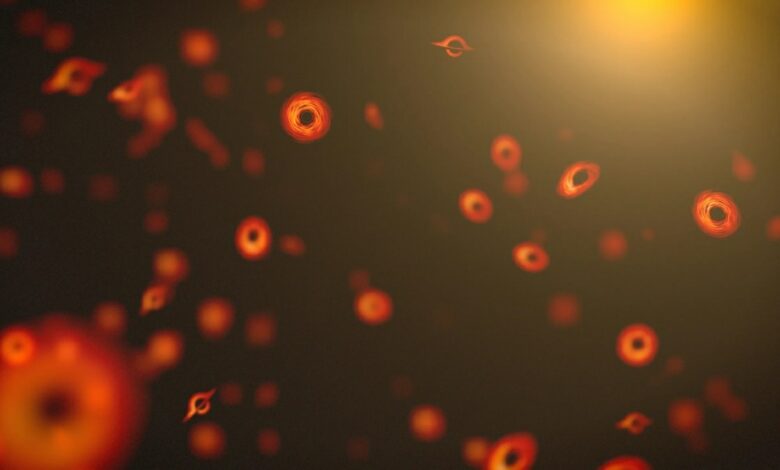This is how researchers want to detect microscopic primordial black holes

Recent studies, published in Physical Review D on September 16 and 17, have suggested that microscopic black holes may be present in the solar system, potentially affecting the orbits of planets and satellites. These objects, called primordial black holes, are believed to have formed during the early universe. They are estimated to have asteroid-like masses, but dimensions comparable to that of a hydrogen atom. It has been suggested that they may contribute to the mystery of dark matter, which makes up 85 percent of the universe’s matter.
Planetary orbits and primordial black holes
It is theorized that primordial black holes originated in dense regions of the early universe that collapsed under their own gravity. Unlike black holes formed by dying stars, these objects are significantly smaller and faster, with estimated speeds of about 200 kilometers per second. paper.
The gravitational effects of such black holes on planetary orbits are studied. Science News was told by Dr. Sarah Geller, a cosmologist at the University of California, Santa Cruz, explained that the fluctuations in a planet’s orbit around the sun could be caused by the gravity of a primordial black hole. Her team has planned detailed modeling of the solar system to investigate this hypothesis.
Satellite interference as a detection method
A separate method for observing satellite movements has been proposed by Dr. Sébastien Clesse from the Université Libre de Bruxelles, together with Dr. Bruno Bertrand of the Royal Observatory of Belgium. It was suggested that small black holes could subtly change the altitude of satellites, making detection possible. Existing probes, it was argued, could potentially be used to measure such disruptions. The method was described as particularly effective for smaller black holes.
Limitations and complications
The feasibility of detecting primordial black holes was questioned by Dr. Andreas Burkert of the Ludwig-Maximilians-University Munich. It was noted that other factors, such as solar winds or asteroid interactions, could mimic the gravitational effects attributed to black holes. It was further noted that although the detection of these objects is considered rare, the possibility cannot be completely ruled out.
The research has introduced promising approaches to uncovering these elusive objects, with the potential to answer important questions about the universe, including the nature of dark matter.




